The pros gladly opine and obsess about precision techniques and the proper tools and angles for sharpening knives. It can be intimidating. But many home cooks would do well to bypass those admonitions and simply sharpen their knives—any way they want to.
Sharp knives make better cooks and make cooking better. An improperly sharpened knife is leagues better than a properly dull one.
With that “just do it” mentality in mind, we invited home cooks—and their dull knives—to Milk Street to test-drive a variety of sharpeners to see which they liked best.
We didn’t set out to find the ultimate knife sharpener, the one that yields the finest edge and most precise angle. We wanted to single out the tools people would actually buy and use, routinely. We wanted them to pick the tool that would fit in their budgets, cabinets and lifestyles.
This ruled out a number of options right away. A cheap whetstone, the most basic of hand- sharpening methods, is hard to master. Electric grinders all but eliminate the risk of user error and can put a factory edge back on a knife in seconds, but they are expensive and bulky.
With minimal pressure, one repeatedly draws a knife through a fixed-angle abrasive notch—made from ceramic, carbide, diamond dust-coated steel or gritty metal—to remove the microscopic burr (or bent edge) from the blade. Most cost no more than $20.
We purchased 11 popular models ranging in style and complexity, all priced under $75. For our own testing, we had 11 chef’s knives uniformly dulled on a knifemaker’s belt grinder. Then we recorded how many swipes through a sharpener it took to bring an edge back, making it sharp enough to slice through paper without snagging and cleanly cut tomatoes, onions and scallions. We also evaluated ease of use and storage. We used all of those factors to rank the sharpeners from favorite to least, narrowing the selection to six top contenders.
Then we opened our doors to home cooks (and visited some of their homes) to let them test the sharpeners with their own knives.
The testers worked their way through the sharpeners, testing the knives each time on paper and vegetables, then dulling them again on a glass cutting board. And to mimic real-world sharpening, we gave them each product’s printed instruction but no other guidance.
What we witnessed was a lesson on the importance of brevity and clarity, beginning with the directions.
The testers—only two of whom had ever sharpened knives before—greeted dense or overly detailed instructions with groans. “After a day of work, this level of depth was taxing,” one tester said of a set of two-page instructions. (A less generous assessment: “I don’t need a history lesson on knives.”) One manual recommended using 4 to 5 pounds of pressure, prompting universal confusion among the testers.
Mention of the angles to which a blade should be sharpened—generally 18 to 20 degrees for Western-style knives and 15 to 17 degrees for Asian- style—was mystifying to all but one tester. (Blades sharpened to a finer angle slice better but dull more easily; broader angles yield more durable blades but don’t slice as delicately.) Even so, explanations of angles were not wholly welcome. “I don’t want anything this complicated,” one said.
At the same time, testers greatly appreciated specific instructions on the number of times they should swipe a knife through the sharpener (“It doesn’t tell me when to stop,” one commented), as well as the appropriate slot to use, whether coarse or fine, European or Asian. Diagrams were deemed helpful. Notes of caution were also well-received.
Once they were beyond the directions or grasped what style knife they were using, the testers enjoyed the results. Formerly dull knives easily sliced tomatoes and scallions, and the testers began to feel their blades biting the cutting board. “That makes chopping fun,” one said. “This makes me want to cook something!” exclaimed another. “I’d like to have a knife sharpener at home.”
our testers sound off
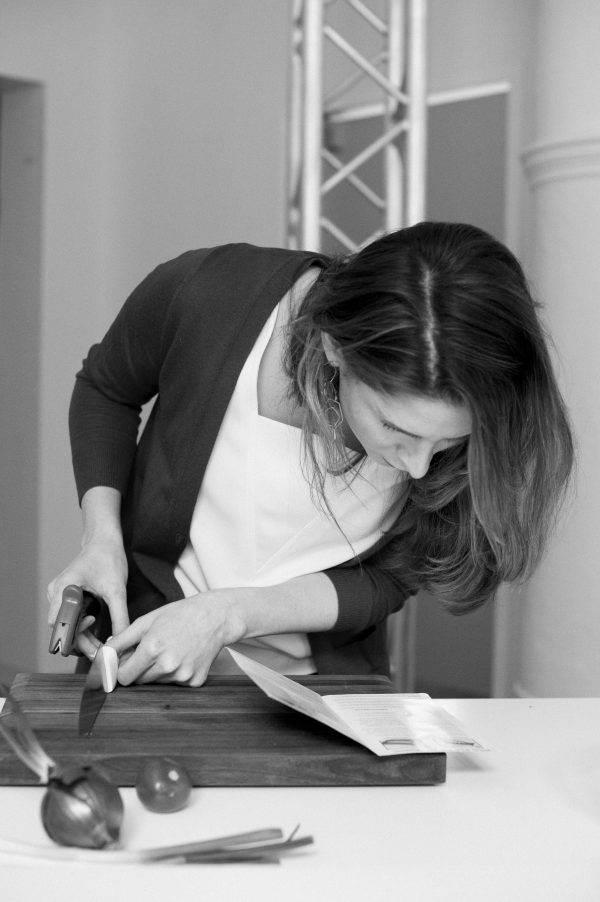
Detailed directions could be onerous: “You have to work at Williams-Sonoma to interpret these instructions.”
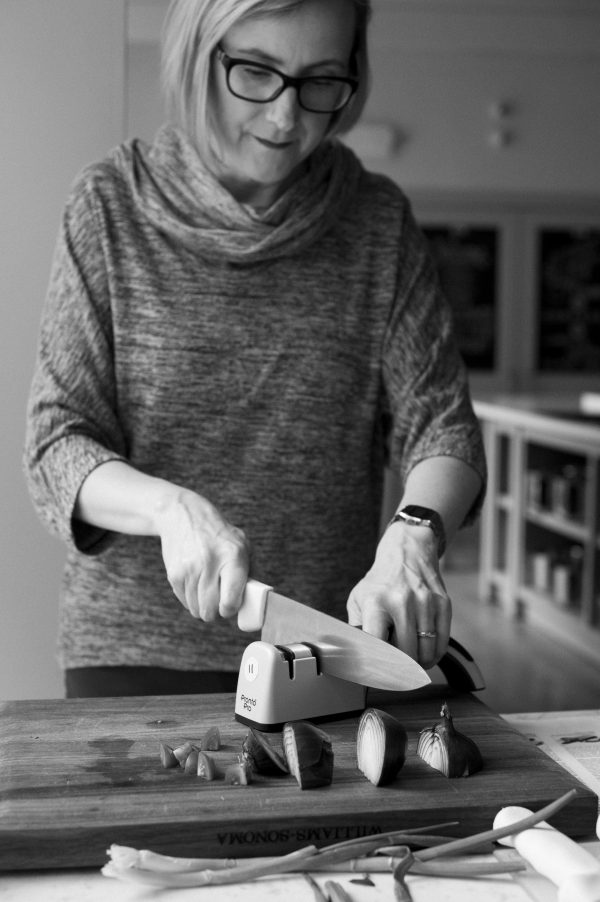
Mention of angles could be mystifying: “I would never know what angle my blade should be sharpened at.”
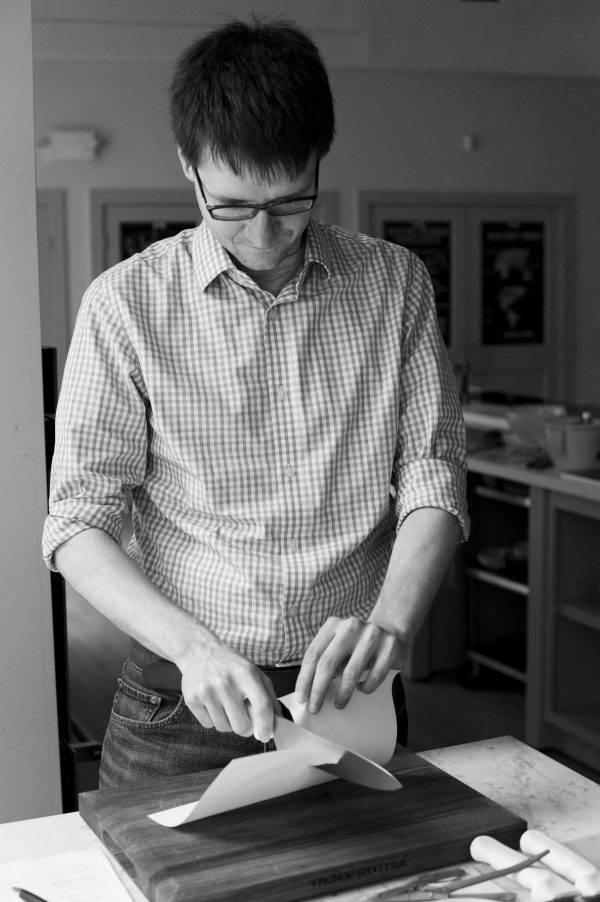
The sharpening results were noticeable: “I feel the sharpness of it more—it wants to bite into something.”
The majority of our home cooks wanted the simplest knife sharpener—but that was contingent on their personal knowledge of and investment in knives. A couple testers, spotting metal filings on the cutting board, worried they might damage their blade with certain sharpeners.
While sharpening a knife at the wrong angle can decrease its performance over time, home cooks with inexpensive knives are unlikely to notice a difference.
So which model is best for you? If you want a small, affordable sharpener with simple instructions and a single-option angle, the Accusharp or the Lansky knife sharpeners are solid options. These were overwhelmingly the favorites of cooks who just wanted to sharpen their knives and get on with making dinner.
If you are mindful of bevel angles and blade steel, and have a larger budget, the Kitchen IQ Angle Adjust or the Chef’s Choice ProntoPro handheld sharpeners are better choices. They offer more control to the home cook, accommodating Asian and European blades, as well as serrated knives. You must, however, be willing to endure somewhat in-depth instructions.
And if you are a real knife aficionado and have expensive knives worth pampering, look elsewhere: Learn the fine art of hand-sharpening or find a professional sharpener.
But whatever you do, sharpen your knives. As one tester put it, “You never realize how dull your knives are until you sharpen them.”
For the Everyday Cook
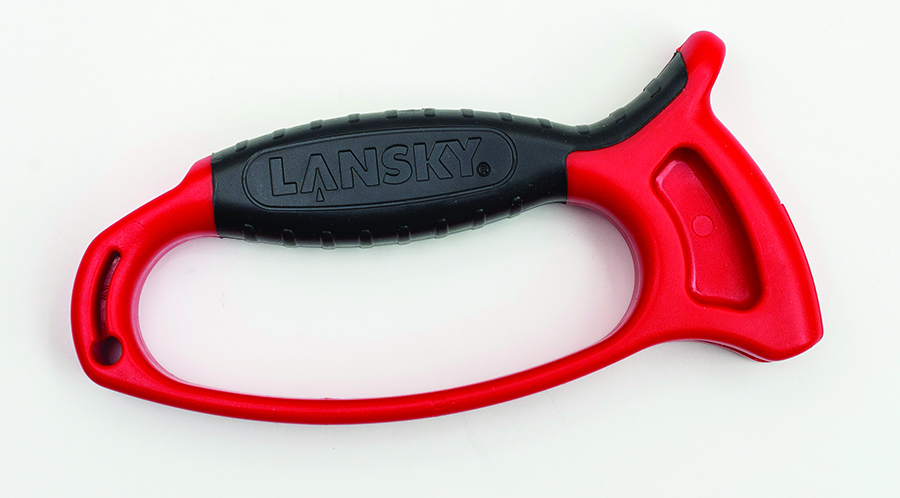
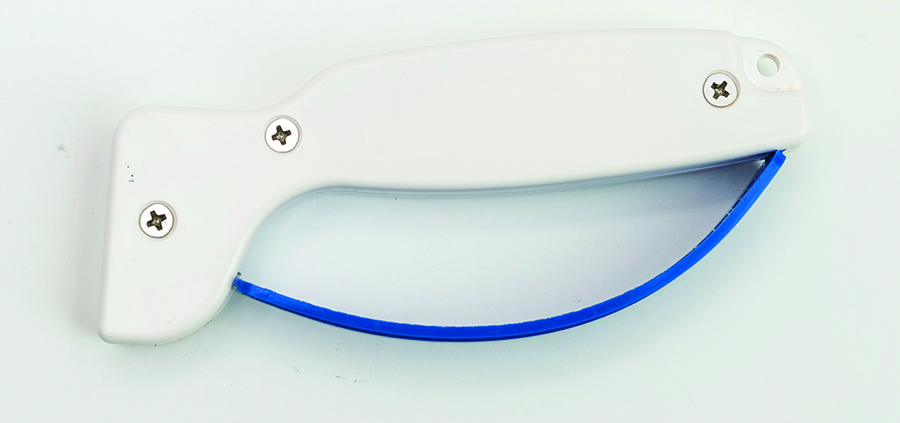
Not for the nervous, the Lansky and the Accusharp require knives be sharpened blade-up, which some testers found disconcerting. But cooks who were unconcerned with bevel angles and who simply wanted to sharpen their knives preferred these inexpensive models. Both models had easy-to-follow instructions and were effective, if slightly aggressive sharpeners.
For the Serious Cook
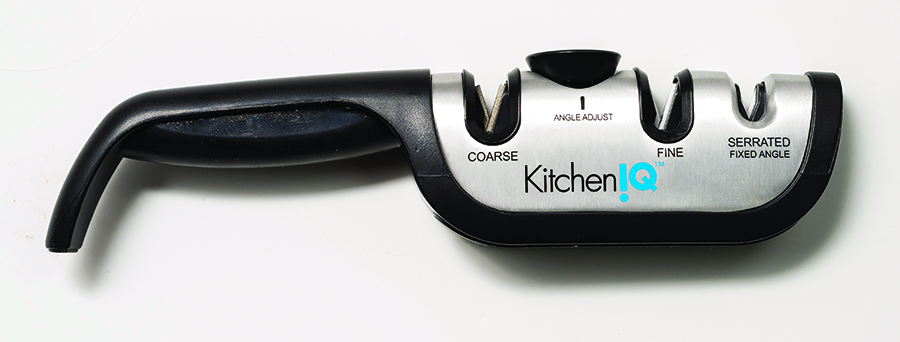
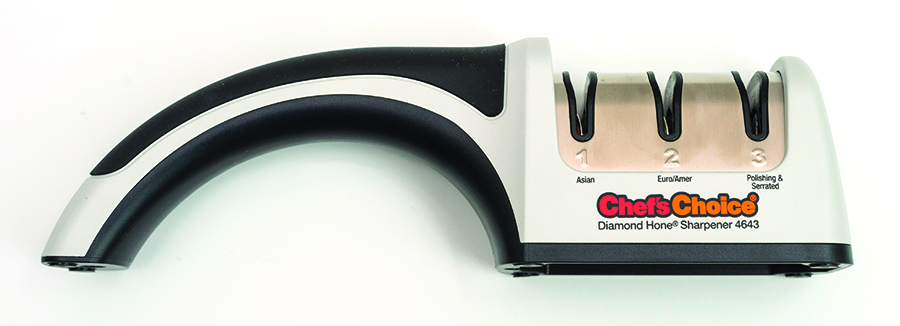
If you want more control over how you sharpen—and you’re willing to pay more for it—the Kitchen IQ Angle Adjust and Chef’s Choice ProntoPro are better choices. They allow for a more polished edge and various angles, with options for serrated, Western- and Asian-style knives. To use them properly, however, one must be willing to read mildly extensive directions.



